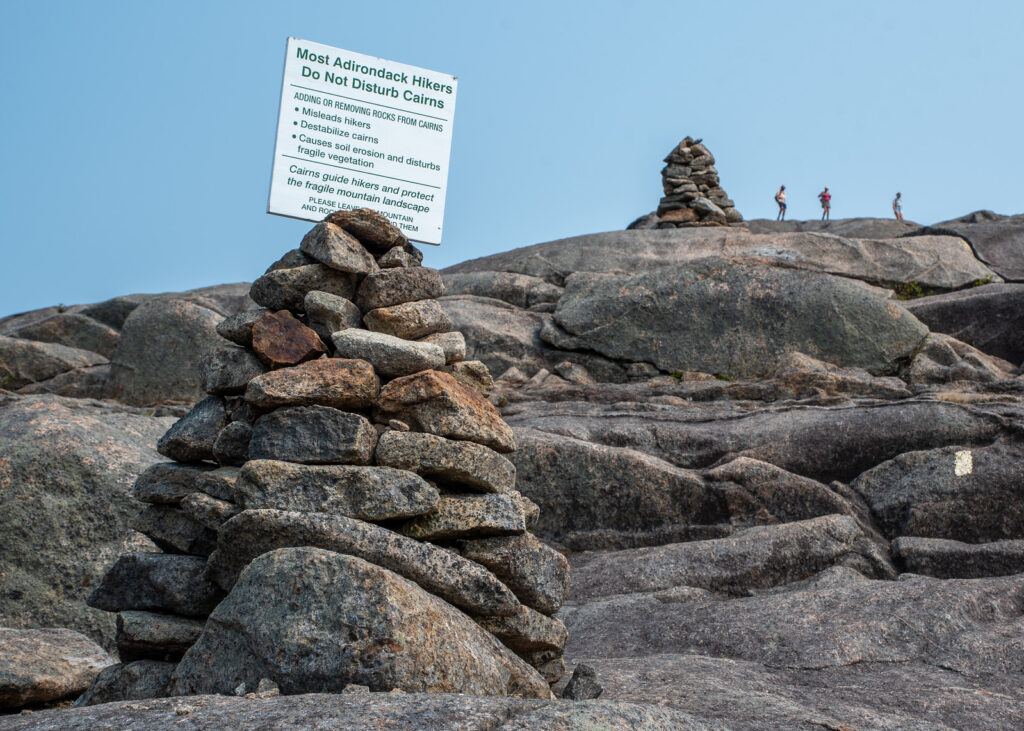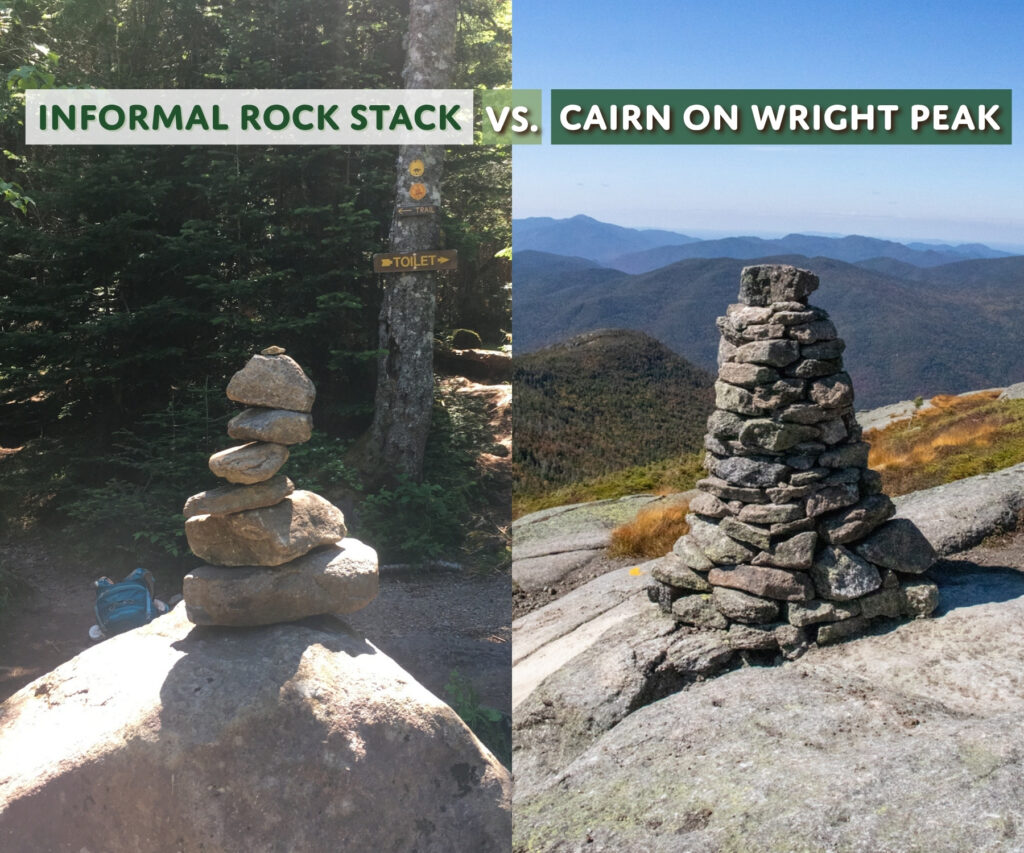ADK Rebuilds Vandalized Wright Peak Cairns
ADK Rebuilds Vandalized Wright Peak Cairns
On September 15, 2025, nearly every rock cairn above treeline on Wright Peak was destroyed. ADK summit stewards immediately got to work rebuilding these essential navigational aids, completing the project in about two weeks despite inclement weather. Rebuilding the cairns on Wright Peak took away time, energy, and resources from other projects summit stewards had planned for the fall.
Cairns vs. Informal Rock Stacks
Cairns (the word derives from Scots Gaelic for “stone landmark”) are stacks of rock that are well-built and sited by trained individuals to mark trails above treeline. These way-finders are designated by the land manager to be built on open summits to help guide people to stay on the trail, especially in inclement weather, thereby concentrating the impact of hikers to a single path and protecting fragile alpine plants.

The cairns you see in the High Peaks are built and maintained by ADK’s summit stewards and trail crews. Do not add rocks to or remove rocks from cairns.
Informal and spontaneous piles or stacks of rocks serve no navigational purpose and can be detrimental to a lost hiker, as well as an eyesore on the otherwise natural landscape. They can also negatively impact local ecosystems by disturbing fragile soils when built in the alpine zone or disturbing the habitat of fish and macroinvertebrates when built along waterbodies.
How To Tell The Difference
Cairns are carefully constructed and solidly built. Informal rock stacks are typically thinner, or just a few stones piled up on each other.

Responsible Recreation Above Treeline
Stick to bare rock surfaces above treeline. Shoulder season is when the most damage to alpine vegetation occurs, as the freeze/thaw cycle occurring above treeline makes soil wet, saturated, and unstable. The drought-like conditions the Adirondacks experienced this summer have further stressed alpine vegetation.
When you’re out on a hike, paddle, or other adventure, leave everything as you see it. Check out our article on the seven principles of Leave No Trace for additional advice about how to recreate responsibly.
Featured image by Brendan Wiltse, a former ADK summit steward. Parts of “Cairns: Yes; Rock Stacks: No” from the September–October 2016 issue of Adirondac magazine were adapted for this article.
Related
Adirondack Mountain Club Welcomes Molly Marcy to Board of Directors
Lake Placid, NY — December 2025 — The Adirondack Mountain Club (ADK) is pleased to announce the […]
ADK Releases 5th Edition of Central Trails Guidebook
November 25, 2025—The Adirondack Mountain Club (ADK) is pleased to announce the release of the […]
Nov. Ballot Measure: Vote Yes on Prop 1
It’s election season again, and this November you’ll see a proposal on the ballot related […]
Adirondack Mountain Club Announces Sale of Cascade Welcome Center
Lake Placid, NY — October 9, 2025 — After months of careful deliberation, the Adirondack […]

